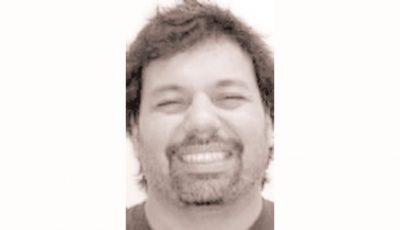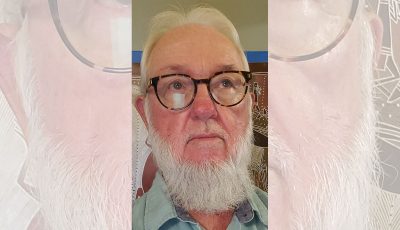Religion, and the death of a friend
Last week a friend of mine passed away.
I hadn’t seen him for a long time, but I knew he was hitting the vodka pretty hard; make that very hard. I learned this from a mutual friend who was extremely concerned.
In the end my friend died of something I never heard of, “failure to thrive.”
I asked a doctor about this and he said that it was an antiquated term, a kind of catchall, which usually included dementia and possible alcohol poisoning. So when the diagnosis of death is given as “failure to thrive” it’s a gesture of kindness to the friends and family members of the deceased.
Nobody wants to hear, “The poor slob drank himself to death.”
When people die, their friends and families often re-embrace their religion for solace.
And yet, most individuals don’t give much thought to religion or spirituality unless something tragic happens: someone dies or becomes gravely ill.
As we know, sometimes an illness (such as cancer) will linger for months and the friends and family members endure a horror—watching their friend or relative slowly deteriorate.
It is then that prayers are offered and candles are lighted.
And yet, miracles happen, and are documented by the Catholic Church. So when people pray for their sick friend, it’s usually for a miracle (sometimes referred to as a “Holy Intercession.”)
Although prayer is a component of every religion, miracles seem to be more evident among Roman Catholic communities.
One thing I have learned in my reading about various religious and spiritual traditions: if a young boy or girl has a deep spiritual experience while still young, it can have a profound influence on his or her life forever.
Such was the case with Edgar Cayce (1877-1946). When he was 12 years old, he was sleeping under a tree beside a river. An angel appeared and spoke to Edgar.
“What do you want to do with your life?” the angel asked.
“I want to help people,” replied the boy. The angel then vanished.
Edgar Cayce later became one of the most gifted clairvoyants who ever lived, even surpassing the famous Nostradamus.
Cayce had the remarkable ability to “see” a person; and, if they were sick, what the cause was, and the appropriate remedy.
Although this smacks of fakery, there are 14,000 documented cases where Edgar Cayce helped people. Not 10, not 50, but 14,000.
A skeptical Harvard professor—assuming Cayce was a fake—wrote to challenge him.
“What did I have for breakfast yesterday?” the professor wrote.
Not only did Cayce supply the answer, he said that the professor was reading his morning mail, and described the content of some of the letters. Then Cayce added, “Pretty snappy pajamas!”
The dumbfounded Harvard professor immediately set out for Virginia Beach (where Cayce lived), saying, “I have to meet this man.”
Many other professors and researchers did their best to discredit Cayce; but, in the end, they had to admit that he truly did have astonishing gifts which defied rational explanation.
Although some of Cayce’s prophesies have not materialized, his medical clairvoyant abilities remain undisputed.
Padre Pio (1887-1968) was a true mystic, who felt God touch his head when he was 5 years old. Throughout his life, he experienced various visions and ecstasies.
In 1918, Padre Pio, as a young monk, began to experience the stigmata. That is, his hands and feet showed the same wounds that Jesus experienced at the Crucifixion. As well, he bled from the side of his body—corresponding to a spear wound Jesus received.
The stigmata stayed with Padre Pio nearly his entire life and were a great annoyance to him. He didn’t mind the pain as much as having to constantly wear bloody bandages.
One of the more remarkable aspects of Pio’s mysticism was that he could read people’s minds, often in the confessional. If someone neglected to confess a sin, Padre Pio, would ask, “Well, what about… that?” Then the embarrassed person would fess up, perplexed at how Pio even knew about it. There were no secrets from Padre Pio.
My favorite story about the Padre happened during World War II.
“In Bari (Italy) during the Second World War were the headquarters of the American Air Forces General Command. The American Commanding Officer sought to lead a squadron of bombers to destroy a depot of German war materiel that had been located in St. Giovanni Rotondo, the small Italian town where Padre Pio and his fellow monks lived.
“The general reported, “As the airplanes approached the target, my men and I saw, hovering in the sky, a monk with uplifted hands.
“Unexplainably, the bombs dropped prematurely and fell into the woods. The airplanes reversed course without being steered by the pilots. All wondered about the monk, which the airplanes completely obeyed.
The general was told, “At San Giovanni Rotondo is a monk who works miracles,” and the general decided that, as soon as the country had been freed, he would go see if it was the same monk he had seen in the sky.
“After the war, the general went to the Capuchin monastery. Upon entering the sacristy, the general immediately recognized the monk which had stopped his airplanes. Padre Pio walked toward him; and, as he approached the general, asked, ‘Are you the one who wanted to kill us?’
“Relieved by the look and by the tone of the Padre, the general knelt in front of him. As usual, Padre Pio spoken to him in dialect, but the general was convinced that the monk had spoken in English. This was another Father Pio’s gifts. The two became friends and the general, who was protestant, became a Catholic.” (Source: Padre Pio on Facebook).
To paraphrase another favorite monk, Thomas Merton: “Mere prayer is not enough, mere desire is not enough. You have to give your whole heart to God. If you can do that, then the miracles start to happen. But you must be patient; you are being tested.”



























